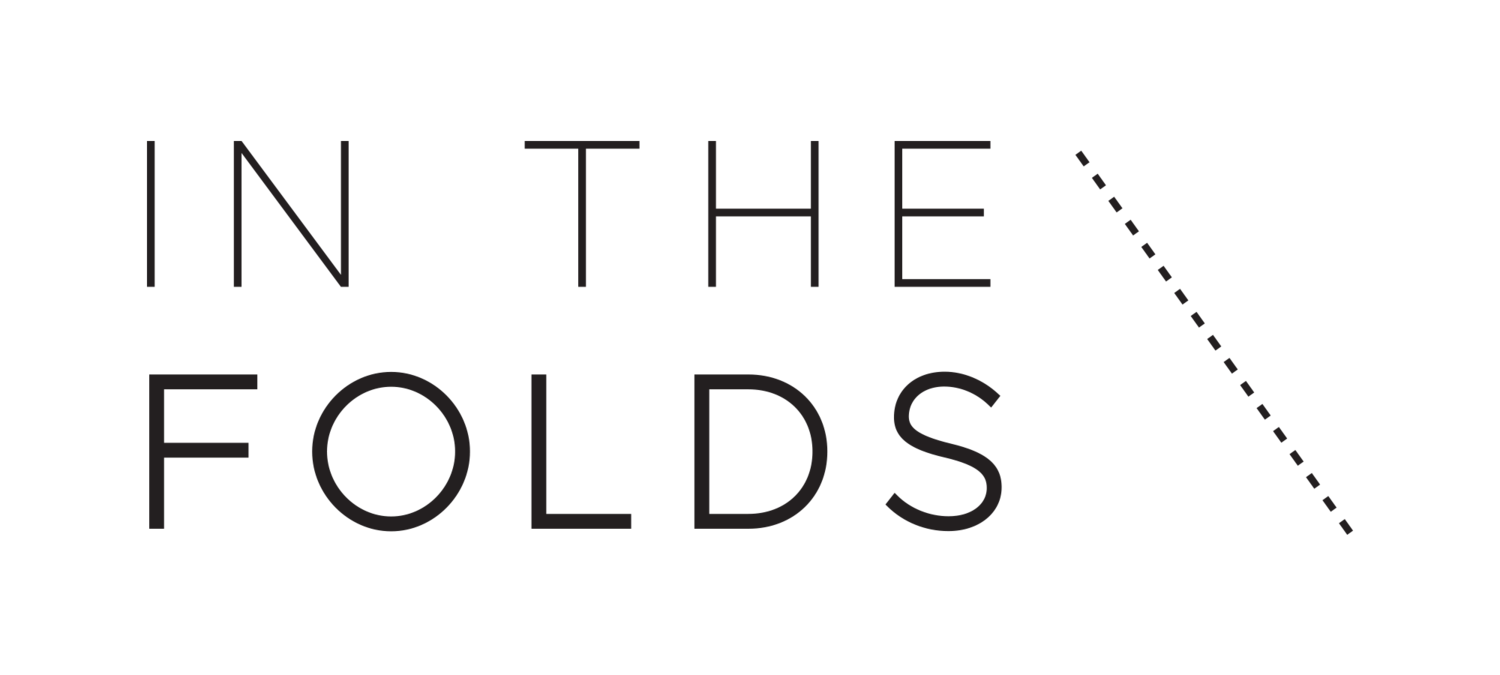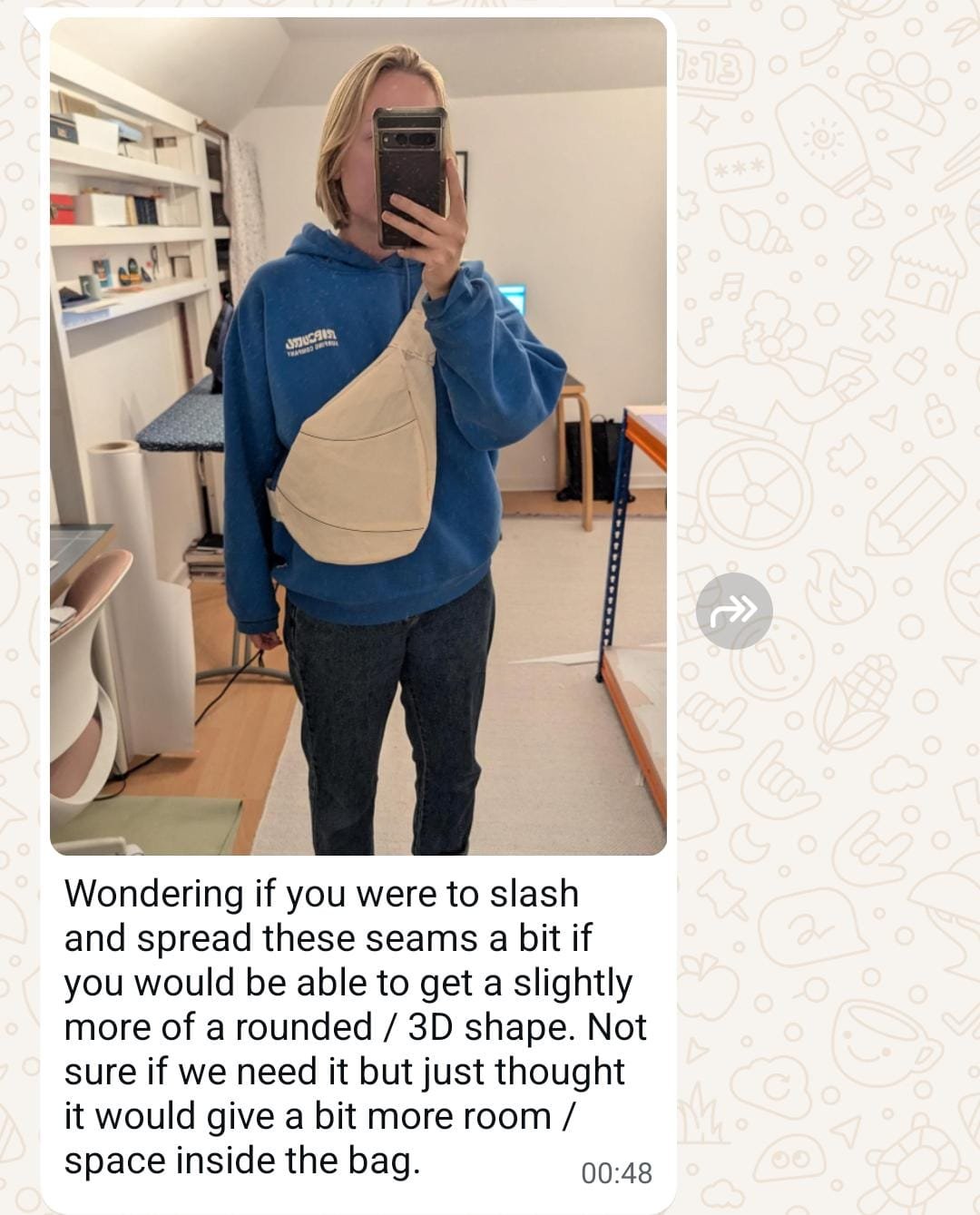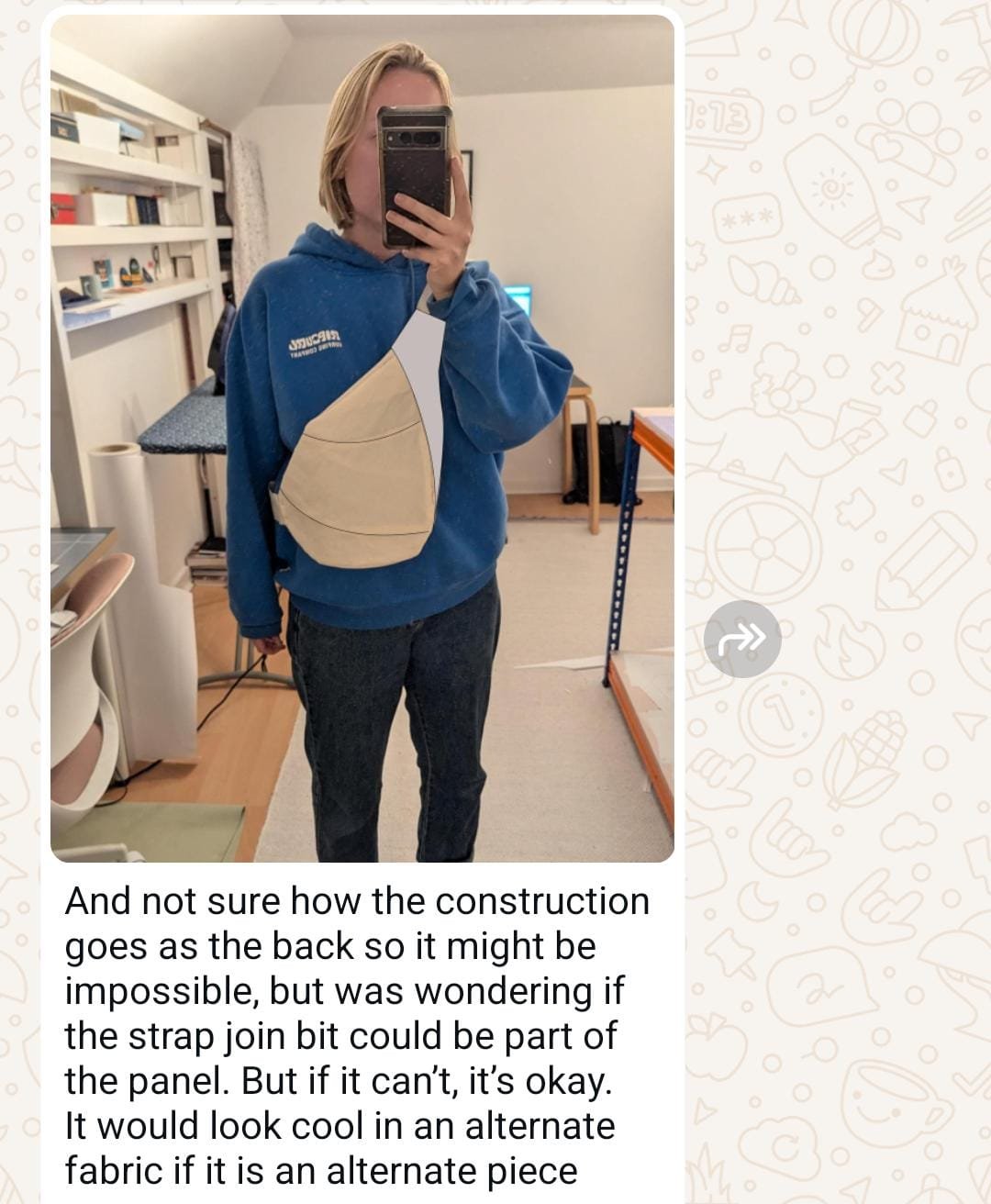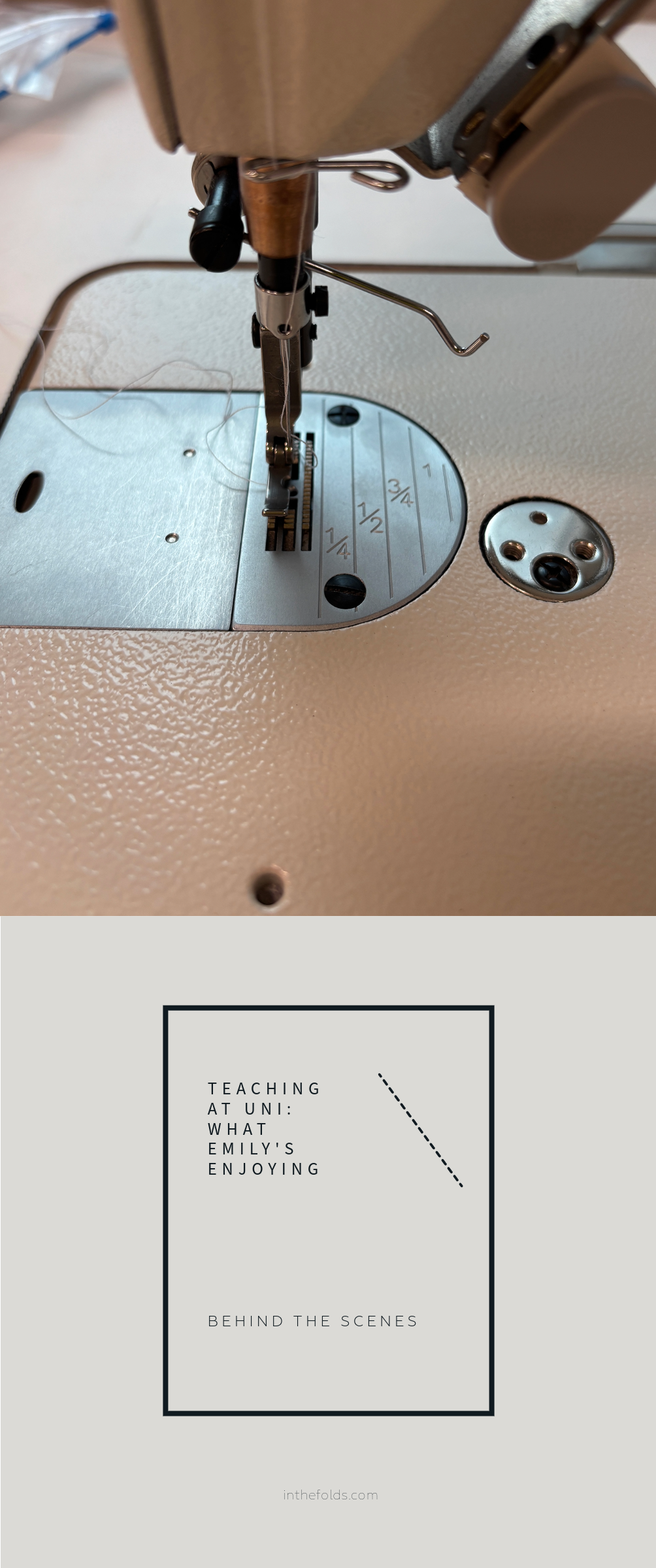There’s something about receiving negative feedback that really gets me. My stomach drops, my heart races. I know I’m not saving lives — I make sewing patterns! — but I care deeply about the work. People trust me with their time, money, and fabric. I want them to walk away from an In the Folds project not just with a beautiful garment or accessory, but with new skills and confidence.
And yet, one piece of negative feedback can take up more space in my mind than a dozen glowing reviews (thank you to everyone who takes the time to share those, by the way — it truly makes my day!).
Today, I want to share a story about one of those moments — and how it ended up teaching me a lot about process, collaboration, and letting go of perfection.
When a gift becomes a bigger idea…
When we started designing the Darlow bag, we thought it might be our December 2024 pattern — something fun, thoughtful, and giftable. A fun, giftable project that could be made in a few evenings. But as we worked on it, it grew into something else entirely. It was more involved, more skill-focused, and definitely more demanding — not the kind of project we could throw at folks during the December overwhelm.
So we reshuffled our schedule, gave it the time and space it deserved, and dived into the details.
Collaborating across continents
If you read our blog post about making this pattern, you’ll know Alys and I worked on this project across continents. When one of us hit a hurdle, we’d pass the project back to the other to troubleshoot — just like we used to when we worked side-by-side. After lots of back and forth, we landed on a version we both loved. It ticked all our boxes:
Reflected the In the Folds aesthetic
Offered a thoughtful, skill-building experience
Felt exciting for our community
We felt good. Ready. Almost done.
An unexpected setback
To be extra thorough, I decided to get a fresh set of eyes on it — our editor, Lee. She usually edits the instructions each month, so I asked if she’d sew a version of the bag while reviewing the instructions.
Honestly, I thought of it as a precaution — I didn’t expect anything major. Then I got the email:
Hi Emily,
I've made a version of the bag and have a lot of feedback — unfortunately, it's mostly negative. I've made a video to explain my thoughts — it seemed like the easiest way. Have a look and a think — I'm happy to chat further.
Overwhelm hits
I opened the video and almost instantly felt my chest tighten. Lee went into detail of the hurdles she had faced, including recreating the zipper troubles in paper to better explain her point.
But the illustrations were done. The pattern was done. The sew-along was done. I lasted ten minutes before I had to stop. I knew I was too emotionally close to process it clearly.
I sent the video to Alys, who’s excellent at setting aside emotion and focusing on what needs to happen. The next morning, she sent me a Google Doc summarising the key points.
Here’s what stood out:
It wasn’t clear how the bag was intended to be worn.
The zipper opened toward the bottom of the bag when worn on the back and rotated to the front.
The zipper installation was overly complicated and didn’t yield a clean finish.
The strap construction felt unnecessarily complex.
Seeing it written down helped. I could start tackling things, one step at a time.
Small fixes first
The first issue was a simple one: we hadn’t made it clear that the Darlow bag was designed to be worn on the front. Alys and I had always just put it on the “right” way when sampling, without giving it a second thought.
I updated the product description and added technical sketches to show how it’s intended to be worn. I also loaded up my own bag and tested different ways of wearing it — and was relieved to find it still worked well if worn differently.
Rethinking the zippers
The zipper feedback was harder to hear, but totally fair. We’d tried a few different methods during development, and although we liked the result, it was fiddly — and the finish wasn’t quite as clean as we’d like.
With other projects and teaching commitments piling up, I knew I couldn’t take this on solo. So I called in reinforcements.
Enter Melanie
I asked Melanie — a brilliant maker and patternmaker I teach with (and now a dear friend) — if she’d be up for the challenge. She agreed to troubleshoot the pattern from start to finish.
Melanie reworked the zipper installation in a way that kept the spirit of our original design but made the process cleaner and easier. We added fusing strips to help things remain stable.
She also streamlined the strap construction, added a topstitching detail to anchor it better, and helped us realise we’d overcomplicated things trying to make the bag adaptable for all body sizes.
She also suggested adding a pocket to the lining to make it even more functional.
She took photos of every step and made detailed notes — a true lifesaver at a moment when I just didn’t have the brain space to take it all on.
She was also ecstatic about the bag. She wore it to a gig the night she finished it! Having her enthusiasm about the project when I was wading in the messy details of it all gave me a boost of confidence. All was not lost, it just needed some fine-tuning.
Testing it all again
Once I had Melanie’s notes, I started working through the updates. I don’t do the final illustrations, but I can edit them, which comes in handy during tight deadlines or small changes.
Still, I hit wall after wall. I couldn’t tell if the updates worked without sewing them myself. So I did a pocket sample. Then I made a full bag. Sewing the new zip method a second time — especially after the pocket sample — made everything feel smoother. (Even I need the reminder sometimes: doing a practice run is always worth it.)
I photographed the process for the sew-along, updated the instructions, and sent the new version back to Lee for a final check.
What we learned
I’m not going to sugar coat it — this was a slog. It’s disheartening to redo work you thought was finished. But I was also grateful. Grateful we got the feedback in time to fix it. Grateful our customers wouldn’t have to wrestle with the issues our editor faced. And grateful for the chance to reflect on our workflow.
We probably jumped ahead too quickly — the sew-along shouldn’t have been finished before the pattern had been fully tested. That’s a lesson I’m taking forward.
I still hate receiving negative feedback. I still get that stomach drop. But I’m learning that it doesn’t mean failure — it means we’re still in the process.
The Darlow bag is stronger now because of that hard moment. And our systems are a little stronger too. Sometime growth doesn’t feel graceful, but it’s worth it. And, I’ll take that over “perfect” any day.
Thanks for sticking with me, and thanks (always) for supporting In the Folds.
Happy sewing!
Emily








































